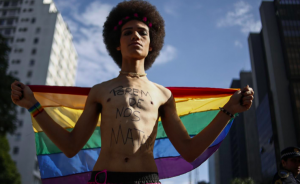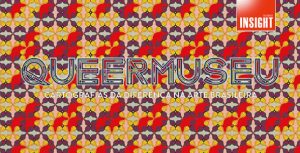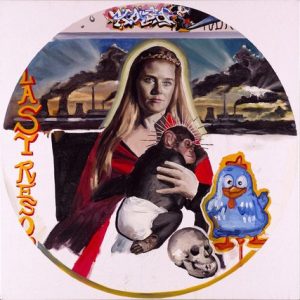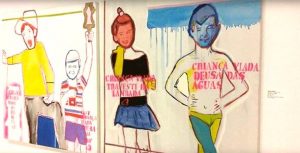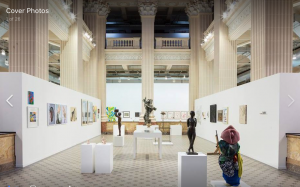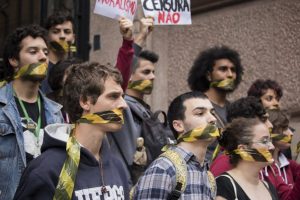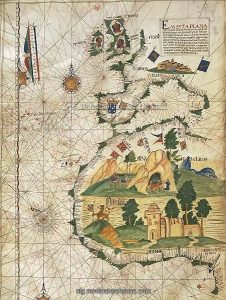Classnotes
Class 1/30: The Portugese Colonial Enterprise
Class layout:
- Map Quiz
- Alberto presented a news story about the rise of evangelicalism and violence against the LGBT community https://brazil2018.voices.wooster.edu/2018/01/29/brazilian-history-and-culture-blog-post-brazilian-evangelicalism-and-its-effect-on-the-lgbt-community-in-brazil/
- Discussion of Portugal’s approach to colonization
- Look at 4 types of a list of types of colonialism designed by Nancy Shoemaker
- Small group discussions about the question, argument, evidence and sources of Muriel Nazzari’s article.
- Large group discussion of the small group discussions
- Concluding question: What does this teach us about colonialism in Brazil?
Today’s class largely became an examination of how colonialism impacted and shaped ideas of marriage and extra-marital sex through complicated hierarchies of race, class, gender, and birth status showing a small aspect of the countless ways colonialism was far more than an economic system but a system for economic gain that set up a social structure to uphold profits and power. Our in-depth discussion prevented us from talking about the other readings, so the questions we primarily addressed from the schedule were about the Nazzari piece.
What social hierarchies does Nazzari describe?
What structural inequalities do you see?
How do hierarchies of race, class, and gender shape family formation?
We touched on the economic model in Colonial Brazil, and how this model shaped the lived experiences of its inhabitants.
Key Terms:
- Transculturation- a process through which two or more cultures interact, mutually transforming each other. Often, such as in examples of colonization, there are underlying inequalities in power of the cultures which influences the ways in which transculturation works and who is favored.
- Endogamous-marrying within the same social group
- Concubinage—“an illegal and (from the point of view of the church) “immoral” sexual relationship between a man and woman in which the inherent gender inequality was reinforced by the added inequality in property, class, civil status, and/or race” (Nazzari)
Three Questions:
- How did the Church and the government work to try to regulate family life? How did some individuals push back against the restrictions?
- How did the Portuguese worldview and experience in Europe (especially Iberia) impact ideas of race and religious “superiority” in colonial Brazil?
- What do we learn about colonization from Nazzari’s argument?
More Links:
Nancy Shoemaker’s full list of types of colonialism:
https://www.historians.org/publications-and-directories/perspectives-on-history/october-2015/a-typology-of-colonialism
An article from The Economist about the far-Right candidate for president in Brazil that Alberto referenced.
https://www.economist.com/news/americas/21731190-can-right-wing-demagogue-win-next-years-election-jair-bolsonaro-hopes-be-brazils-donald
More about Portuguese colonization in a global, not Brazilian context:
http://www.newworldencyclopedia.org/entry/Portuguese_Empire
Reflection:
Towards the end of class, we began a question of historical theory about the use of words like consent as well as acknowledging that these marriages were happening before the modern idea of marriage that considered love a pre-requisite. The question is how to apply (or when to be careful not to apply) the use of present day concepts that did not exist in the era under examination. Nazzari decides to use an outdated term that was used during the era she is looking at because this better captures the relationship without asserting there was no cohersion involved such as the word “consensual” implies.
These questions are also raised in a debate of diagnosing historical characters with mental illnesses or deciding a historical character was queer. The word queer has in someways eased this debate because historians are not having to speculate too deeply into how a person would identify. For instance, it is easier to label a historical character as ambiguously queer than selecting lesbian, gay, or bisexual to be their sexual orientation. However, the application of the word queer to historical characters who lived during eras when queer was a slur makes the application of the word an imperfect solution.
The idea of naming and distinguishing different types of colonialism is interesting for providing quick frameworks for explaining the experiences of various places through colonialism. These classifications also have limits because many places experienced a variety of the categories and local context and peoples contributed to how transculturation developed. They can help with decolonization by building a network of ways different places were subjected to systems that were both very similar and very different. It also helps students from a US background because it discourages the assumption that colonization in other places resembled US colonization.
One component of the reading I would like to examine more is the role of the Church as a regulator of colonial life in this case, regulator of family structure. The church was not as economically driven as other parts of the colonial super structure, although the church benefited economically from the colonial system. (It does not take digging through archives to see how some of the wealth of the colony was invested into churches. The São Francisco Church with all of the elaborate gold art shows the position of the church to anyone who hears of it.) The Church’s role was to create a moral realm to uphold other colonial structures and was discouraged from abandoning this role as the Jesuit expulsion proves. I would be interested to know if the elite used the Church to achieve a sense of money clean of self-interest and replace the sense of wealth as a benefit for a greater good thus cushioning colonial wealth accumulators from the horrors around them. If so, how did this purpose of the Church change or continue after Independence and what impact did that have on marriage?





